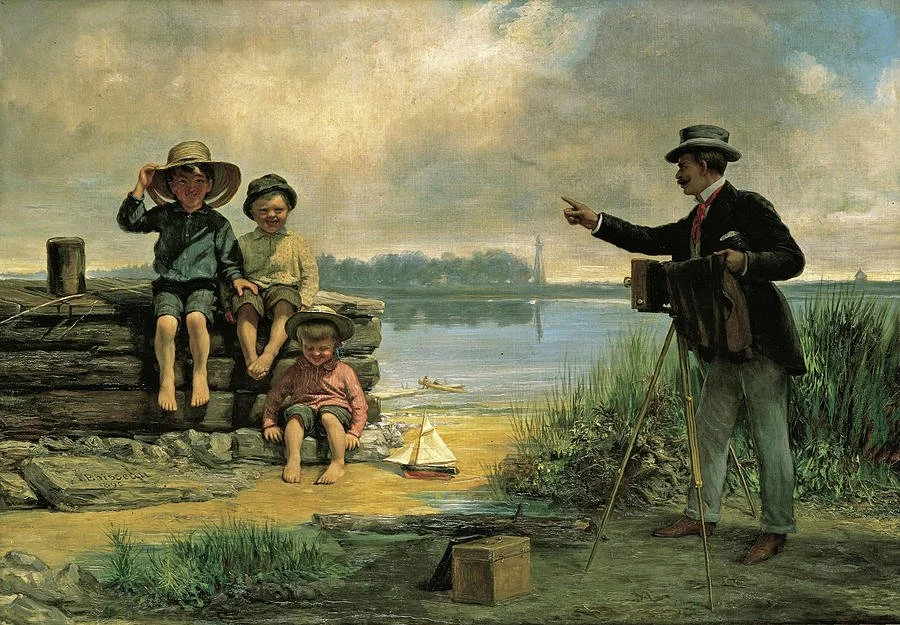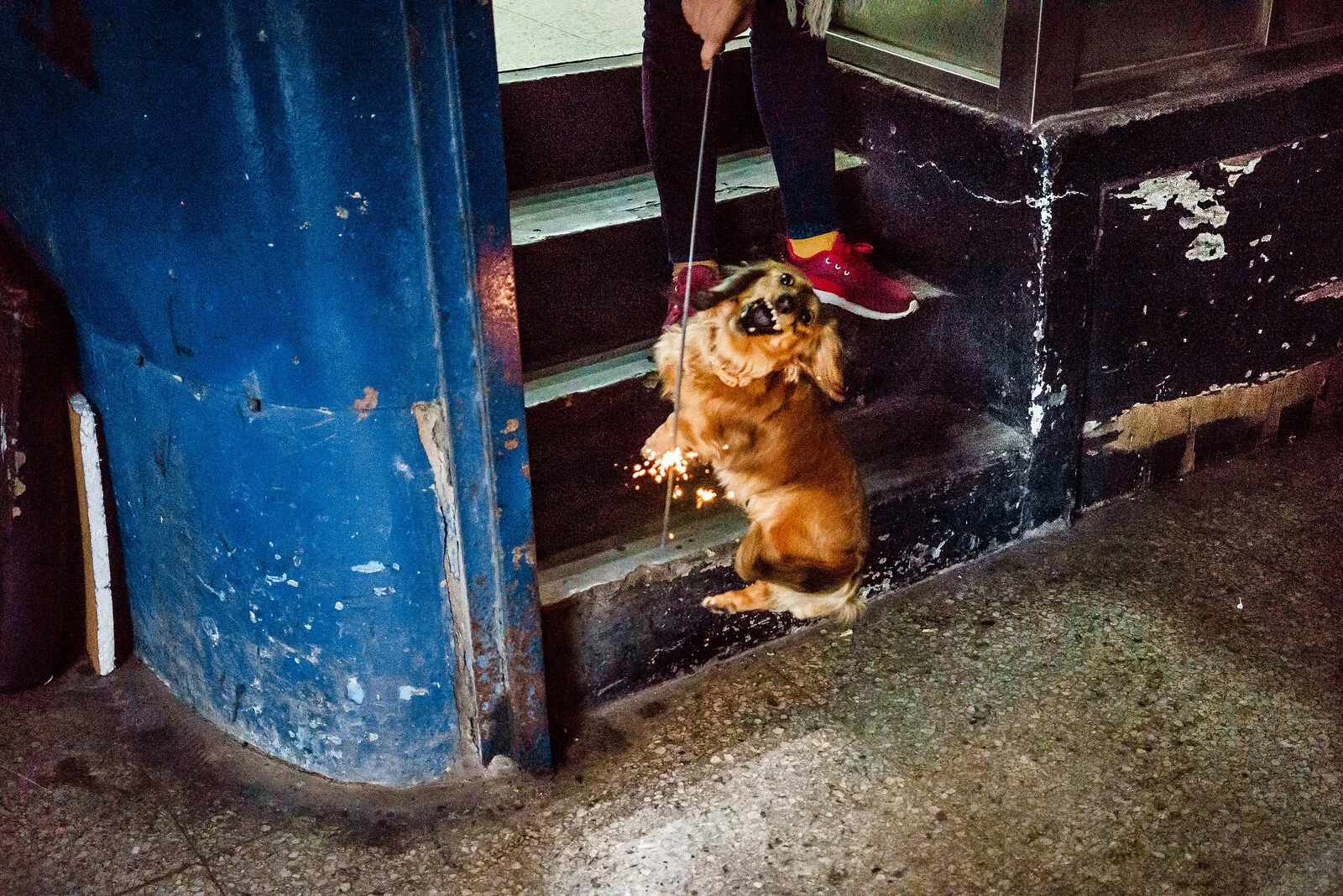BME Interview series: TC Lin talks with Teresa Chang. This interview was conducted in Chinese and translated to English.
1. Hello. Could you please introduce yourself?
My name is Teresa Chang. I have been shooting in the streets for more than three years. My day job as a secretary is quite stressful, so to relax I took advantage of an opportunity to meet with some friends who are into street photography, and whenever I had the time, I would go out shooting with them. I never expected that I’d becomeso addicted to it. Now, if I don’t take photos, something just doesn’t feel right; it seems I’ve fallen in love with it.
2. How did you come to take up a camera and start shooting?
I was following my group of street-shooting friends in Taichung. I didn’t pay much attention to the specific equipment because the main thing is to be willing to go out and try to connect and interact with people. The camera is really secondary to that. I’ve been using the same camera and lenses from the beginning, and I’ve become used to using two fixed-focal-length lenses for everything. At first I just observed from behind my friends, just to see how they shot. I didn’t think I’d get so intoit, but I did. In the course of shooting street, you can discover all kinds of places, fascinating places you would normally not give a second glance to, just on your way to or from work.
3. What do you hope to convey through your photography?
I don't know what most people think about the environment here in Taiwan; many might see it as very messy and lacking the kind of beautiful scenery you see abroad. But in my eyes, Taiwan is quite unique, and I feel my work reflects a unique Taiwanese flavor. Some pictures might seem quite conflicting, but that is one of the characteristics of Taiwan. One of the reasons I’ve sought to participate in some international competitions over the past three or four years is that I hope people from other countries can see and appreciate the street scene in Taiwan, not just the usual scenic and portraits. What are the defining characteristics of Taiwan? What are our streetscapes like? I really want people from other countries to see it all.
4. What exactly do you mean by “conflicting” work?
For example, some back alleyways and barred-up windows…many people think that such sights are ugly, as well as the old vegetable markets. In fact, these kinds of enviroments have been created over time by the daily habits of Taiwanese people. What I am recording is not a matter of beauty or ugliness; authenticity is large part of what attracts me, but also a sense of the surreal...it’s hard to describe.
5. How has your attitude towards photography changed in the past three years?
The camera is a tool;street shooting is a method. I was shooting aimlessly in the beginning, and after meeting with my friends and also seeing a great deal of work from around the world, I began to come up with my own ideas and organizing series. Street photography for me can't just be a simple, aimless pursuit, so I worked towards making series, as I think this is very important.Simply shooting single street images, I feel, doesn’t let me speak my own truth, and the final work won’t be complete; it will always just be about the single image. If it is only a street scene, it won’t be accepted by most of the art circles in Taiwan. If your photo is good, but there is nothing behind it, it is still just a general street view and cannot attain the status of top-notch work here. You’ll just be stuck, and if you are stuck at that stage for three or four years, there is nowhere to go, no way to improve, so you should try to break through that, think about what is going on around you, what the series you want to create is, and then organize and edit it. It’s much better to have parameters.
6. Regarding the series you just mentioned, do you plan a series of photos first and then shoot it, or do you come up with the series from photos you’ve already shot?
I think that both approaches can be done at the same time. The first thing is to shoot broadly. Whatever you see is related to your life, so you can try a wide range of shots, and then edit the photos. There will be sufficient context, and you will know generally what kind of shots you’re most interested in getting.
7. Does a series have to tell a story? Do you need to plan it first? What advice would you give to people who are starting out?
It can be a story or a description of one thing. You can shoot with or without a plan, or take a subject and either narrow it down or extend it. In fact, none of this is set in stone. Some people may be more suited to working in a certain way, while others are not, and this of course applies to everyone. Alec Soth’s book Sleeping by the Mississippi is not just recording the places he visited on his trip, but it’s also telling the stories of the people he encountered along the way. He planned the shooting in order to successfully complete the book. Alex Webb, on the other hand, shoots street scenes, just shooting where he goes without a solid, deliberate plan, but he is very good at shooting and has his own personal characteristics. So I feel one shouldn’t limit oneself too much;just be willing to go out and shoot a lot, and you’ll discover the right direction for yourself. Although I’ve only been shooting for a little more than three years, during this time I have gotten to know many friends who practice many different types of photography.So I think I have grown a lot in this respect.
8. How does your work reflect your personality and ideas?
I’ve liked painting very much since I was a child, but traditional Taiwanese families always feel that painting has no future, so most of my elders did not encourage me. I felt restricted in such an environment. Later, photography helped me discover my own direction. Many people have experience in photography, and/or have taken a class on the subject. The teachers will generally teach composition, the rule of thirds, etc. I never learned those or what was supposed to be the best angle for shooting, or apertures or shutter speeds, etc. I tend to rely on my intuition, being attracted to certain images even though I may not know why at the time. I’ve tried looking at some photography books;they bored me back when I started, but after I’d been doing photography for a while, I began to realize the meaning behind the collections.
9. How did you get the idea to make a photobook?
Actually, this was the first one;there are only twenty pages. The main purpose of the photobook was to let more people see my photos. The collection was published by an independent publishing company in Taiwan. Everyone knows that photobooks are perceived by most publishers in Taiwan as not being that sellable, so most photographers here have to self-finance limited-issue photobooks. They are all working to express what they want to express.
10. How did you edit and sequence your photobook?
I actually have a lot of photos, so I asked my friends to help me edit them as they have more experience in that regard. Taiwan is more than just the usual wedding photos, studio portraits, and landscapes…with my work, I hope to gradually subvert some of the more traditional views of photography here. Street photography is quite common in other countries, and the concept is a good one.
11. What plans or developments do you have for your photography over the next decade?
I’m just going with the flow. I say this because, in Taiwan, one has to be very persistent to accomplish much in the photographic circles.This is quite difficult to do because there seem to be many unwritten “rules” in Taiwan! Ideally, I should be following my own vision step by step, not forcing it, because, after all, I am not a full-time photographer; photography is an interest of mine, letting me relax, and it’s the life I want, i.e. it’s enough for me for now. Of course, after I won the Miami Street Photography award, many people started to notice me, and this may also be a good motivation for me to speed up some of the things I’ve wanted to do.
12. What motivates you to continue to practice street shooting?
Photography is just a matter of course for me. Like you, when I see a picture, I just take it. It is a natural reaction, not something I do with any particular deliberation.
13. Which photographers/photography books have had the biggest influence on you?
I really like the Alec Soth book I mentioned above;it is very quiet and poetic. He connects the scenes together in a way I really enjoy. When I first started, I was attracted by the images of Alex Webb, as he uses so many layers of light and shadow, and I also like Japanese photographer Rinko Kawauchi; she tends to shoot some abstract details, but with strong emotional connections. And there are actually many others I like.
This one, which won the Miami award, is quite funny. Some netizens sent me a message describing the composition of my work like this: The character fits exactly in the block of color, the light on the neck of the main character is a nice finishing touch, and the right foot fills the composition...they told me all this very systematically. In fact, when I saw it, I just thought it was a nice scene. The colors attracted me, so I waited there for a bit. I won't wait too long…I know some people will wait for a long time to get a photo, but I won't; I just tend to wait for a bit and, if nothing seems to be happening, I just move on. I won't force myself to shoot something like that in particular. For this photo, I took about three or four shots there. When I saw the scene, I pretty much knew what composition I wanted. I knew that children would be coming down the slide, so I waited, and the appearance of a pair of feet at that time was quite fortuitous, as I didn’t have to wait that long. Without the feet, I feel that the picture would not be that interesting.
I generally prefer to take interesting, somewhat quirky pictures. I don't know if people can see the relationships and connections in this shot;many people ignore such small details; I may record things most people see as boring but which I think are interesting. I wanted to try some different things here, so I talked to them and asked if I could take a couple more shots. I told them that it was because they were quite interesting, and even though they had no idea what I meant by that, they still agreed to let me shoot them.
This one was taken in a fishing port in Keelung. The fisherman was washing next to the pier. He also asked me what I was shooting; I said I was just shooting everything. Although I took a photo in a bit of a fun-minded spirit, I never shoot with ill intent. If it will provoke people or insult them, I won’t take the photo.
This was taken at the Flower Expo in Taichung. I love the feeling of the light and shadows cooperating to give the impression of the boy being tied up in light. I didn’t wait for this scene; I just happened upon it.
The scenes I shoot are often quite ordinary. If this scene hadn’t caught my eye, I would have passed it by. The tent looks just like a house;some people’s figures are revealed by the light and shadow, but most people aren’t able to see just what is going on from just looking at the shot, and are curious about how and where I shot it.In fact, this is just the light and shadow in a tent set up in Taichung Park at night.
This one was shot at a temple fair in Lukang, in central Taiwan; it’s a bit like an Alex Webb shot. I think the main thing about this photo is the face of the auntie on the right, because her eye makes the photo. If she weren’t there, the whole picture would be too flat. This is a close shot taken with a 28mm lens. When people start shooting, they often find it difficult to start taking close-ups because they are embarrassed and afraid of others. When your behavior is strange, people will think that you are very strange. In fact, you only have to be generous and open, and act naturally. People may be curious and ask what you’re doing, but there shouldn’t be any hostility. If you really don't want to interact with people, just pretend you’re shooting something else! Once, when I was wandering around a village in Southern Taiwan, I just happened upon an indigenous wedding…so I just walked in and started taking pictures. They asked me what I was shooting, and I just told them that the wedding was fascinating to me. So they invited me to join them in their celebration, the dancing, the food…they even offered me some betel nuts! The point is to go with your feelings when interacting with people on the street.
Websites:
Instagram: https://www.instagram.com/teresayayaya/





